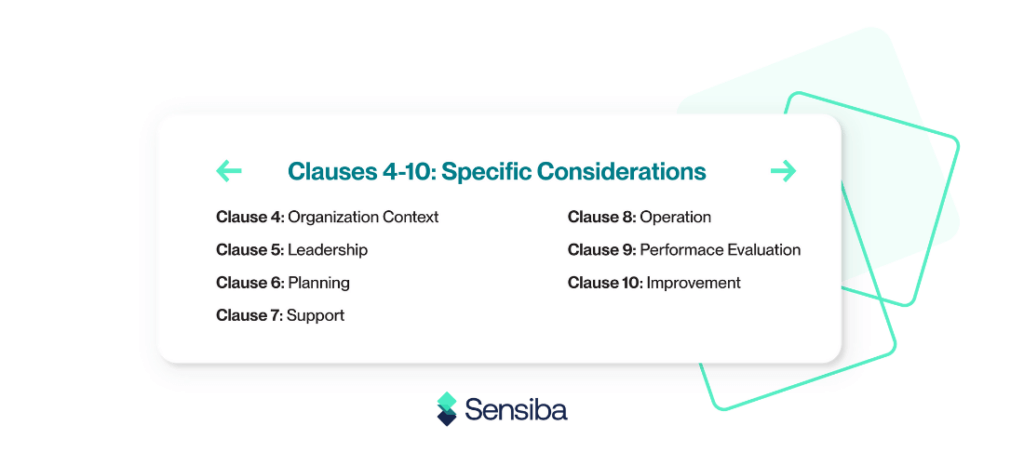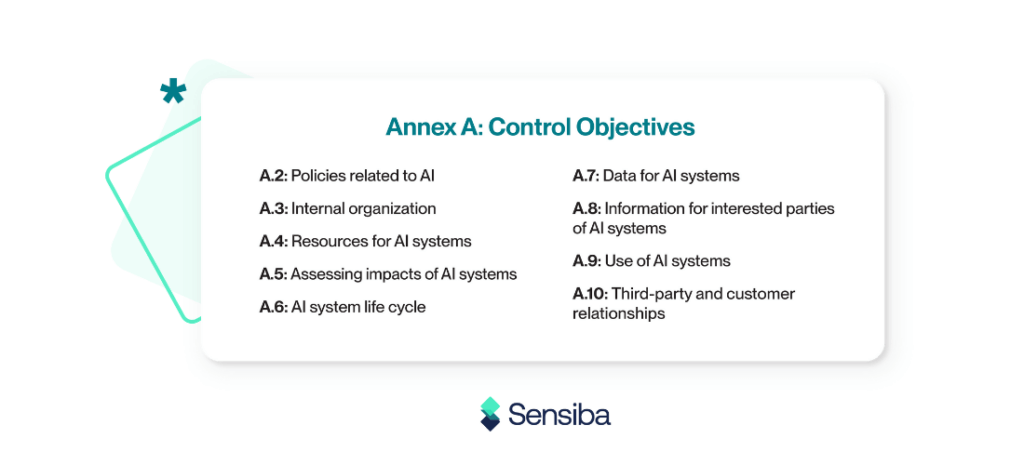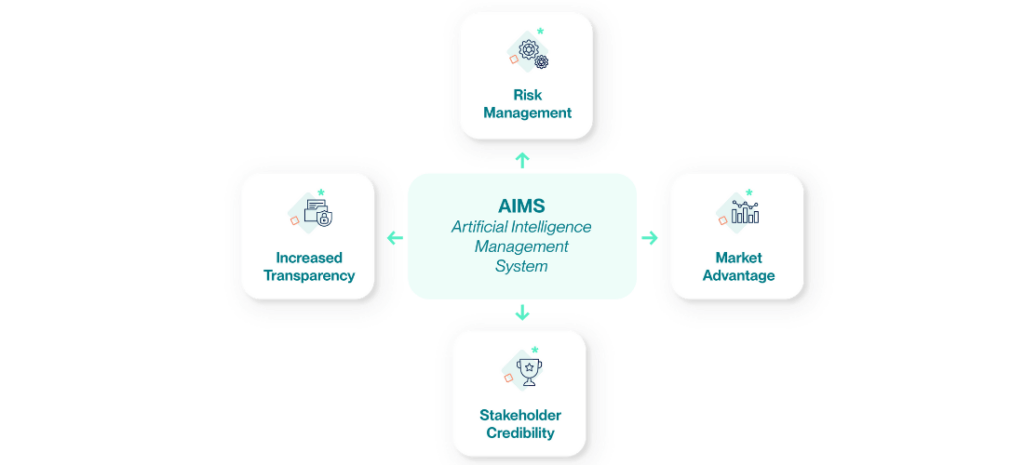As Artificial intelligence (AI) introduces new organizational opportunities and risks, the ISO/IEC 42001 standard offers guidance and controls to help organizations deploy AI efficiently and mitigate the related security risks by developing an Artificial Intelligence Management System (AIMS).
ISO/IEC 42001, published in 2023, addresses the AI system lifecycle from initial concepts to final system deployment and operations. The standard is designed to help organizations manage the risks associated with AI and ensure their systems are developed and used responsibly.
ISO/IEC 42001 compliance should be considered by any organization with public-facing products or services leveraging AI.
To evaluate compliance with the standard, an ISO/IEC 42001 certification audit will examine several areas, including AI-specific ethical, security, and operational considerations, system lifecycle management, performance optimization, and documentation.
Organizations should also evaluate the various organizational roles within the AI lifecycle—production, development, provision, and use—to understand and manage risk effectively.
Risk and Impact Assessments
ISO/IEC 42001 places significant emphasis on AI risk and impact assessments. For the standard’s mandatory risk assessment, organizations are required to identify potential risks related to AI systems, evaluate those risks, and develop risk mitigation plans.
The standard’s AI Impact Assessment process involves:
- Evaluating potential consequences of AI systems on individuals, groups, and society
- Considering technical and societal contexts in which the AI is developed and deployed
- Assessing impacts throughout the AI system’s lifecycle.
Organizations are required to document this process and measure AI-related risks and their potential consequences.
Understanding the Standard
The ISO/IEC 42001 standard follows a similar structure as ISO/IEC 27001 (Information Security Management System), making it easier for organizations to integrate their security and compliance efforts. Thanks to this similarity, and the overlap in the information evaluated during a certification audit, organizations that have ISO/IEC 27001 certification can be well on their way to obtaining ISO/IEC 42001 certification if they choose to.

The ISO/IEC 42001 standard consists of 10 main clauses:
- Scope
- Normative references
- Terms and definitions
- Context of the organization
- Leadership
- Planning
- Support
- Operation
- Performance evaluation
- Improvement
The first three clauses are shared with other standards, and specific considerations are addressed in Clauses 4-10:
- Clause 4 – Context of the Organization: Organizations must understand their internal and external environments, including AI-specific roles and other factors influencing AI management.
- Clause 5 – Leadership: Mandates leadership commitment to integrating AI requirements, fostering a culture of responsible AI use, and aligning AI management with organizational objectives.
- Clause 6 – Planning: Focuses on strategic planning to address AI-related risks and opportunities, set AI objectives, and plan for effective AI management.
- Clause 7 – Support: Ensures adequate resources, competence, awareness, communication, and documentation to support the AIMS establishment and implementation.
- Clause 8 – Operation: Addresses specific operational aspects of AI management, including the AI risk assessment and treatment, impact assessment, change management, documentation, and other key details.
- Clause 9 – Performance Evaluation: Involves monitoring, measuring, analyzing, and evaluating the AIMS.
- Clause 10 – Improvement: Focuses on continual improvement of the AIMS.
ISO/IEC 42001 Annexes
ISO/IEC 42001 also includes two annexes that are important to an organization’s certification efforts and provide additional guidance and information:
- Annex A offers a comprehensive guide for AI system development, including a controls list.

- Annex B provides implementation guidance for the AI controls listed in Annex A, including data management processes.
These annexes offer detailed guidance on AI management ranging from development to risk assessment and sector-specific applications.
The Benefits of ISO/IEC 42001 Compliance
Achieving ISO/IEC 42001 certification can provide several benefits for organizations that include:
- Increased security, safety, transparency, and data quality.
- Stronger risk identification and remediation.
- Improved credibility with customers, regulators, investors, and other stakeholders.
- Stronger market opportunities and competitive advantages.

Like other notable security frameworks, ISO/IEC 42001 certification demonstrates an organization’s commitment to data protection and responsible policies and procedures.
What’s Involved in an ISO/IEC 42001 Certification Audit?
An ISO/IEC 42001 certification audit is a comprehensive process that involves multiple stages to evaluate an organization’s AIMS.
The stage one audit includes:
- Reviewing the documented AIMS, including key policies and procedures.
- Evaluating the organization’s understanding of the standard’s requirements.
- Assessing the context of AI management system.
- Identifying potential gaps or areas of concern.
- Preparing a detailed report with findings.
The stage two audit is more in-depth and involves
- Performing an in-person or virtual site visit to observe processes and interview staff.
- Assessing the operating effectiveness of implemented controls.
- Evaluating AIMS implementation and effectiveness in practice.
- Preparing a report with findings, including non-conformities and areas for improvement
After the audit, organizations must address any identified non-conformities and provide evidence of corrective actions before receiving a decision from the certification body.
Once certified, organizations must undergo annual surveillance audits to maintain certification and participate in a recertification audit every three years.
As a certification body, Sensiba conducts audits against a variety of standards including ISO/IEC 42001, ISO/IEC 27001, ISO/IEC 27701, and others. To learn more, contact us.
















